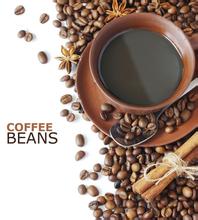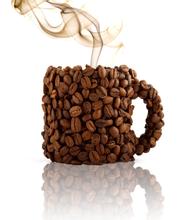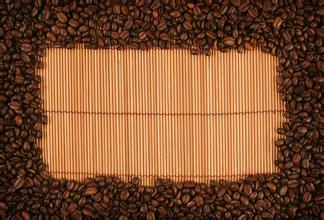Introduction to the characteristics of Kilimanjaro Coffee Flavor description treatment
Kilimanjaro coffee is mainly suitable for blending, can be self-blending or made into a variety of fancy coffee.
Single product production:
Brewing: to brew a good cup of coffee, you need not only fresh coffee powder and slightly harder water, but also a set of easy-to-use brewing tools. There are three main types of coffee machines in common use.
Drip filter: wet the coffee powder with water and let the coffee liquid flow through the filter cloth or filter paper and flow into the container at the speed of natural fall. Basically, this method does not soak the coffee powder, just let the hot water pass slowly through the coffee powder. Both the drip cup and the electric coffee maker fall into this category and are the simplest brewing tools that can make clean and brightly colored coffee.
Bubble type: put the coffee powder into the pot, soak it in hot water for several minutes, and then filter out the coffee grounds by a filter cloth or screen to form a cup of coffee liquid.
Siphon pots, drip pots, Belgian coffee pots and Vietnamese coffee pots are all follicular brewing tools, and they all have a soaking process to form a more complex taste.
High-pressure type: use pressurized hot water to penetrate the compacted coffee powder to produce a thick cup of coffee in this form of tools such as a mocha pot and an espresso machine.
Quick brewing method: can use Italian espresso machine, faster coffee brewing method. The espresso machine can extract several cups of coffee successively. The oil and gum in the coffee beans can be emulsified and dissolved under high pressure during the brewing process, and the essence of the beans is completely extracted by pressure, making the brewed coffee stronger, better in taste and flavor.
Mixed preparation:
First: choose good quality coffee beans, because the use of poor quality coffee beans, of course, will greatly damage the flavor of coffee, even if the production of a very balanced single coffee, but also can not make delicious coffee, the choice of good quality coffee beans is the biggest point.
Second: get rid of defective beans, mixed with defective beans, the taste will become worse. Therefore, it is better to be missing than rotten to get rid of the defective beans without stinginess. For example, long worms with holes, abnormal development, shell without benevolence, will be picked out.
Third: understand the characteristics of coffee beans, if the individual characteristics of the coffee beans to be blended are not well understood, it is difficult to mix good or desired coffee, such as mocha coffee is more sour, it can not be used to dilute the sour taste of coffee.
Fourth: understand the different degree of roasting, different coffee beans are roasted differently, their flavor is also different, so we should have a good grasp, such as Kilimanjaro, Blue Mountain is generally medium-shallow baking, carbon roasting is deep baking and so on.
Making fancy coffee: there are many kinds of fancy coffee. Take Japanese cappuccino as an example.
First, make Kilimanjaro coffee beans into hot coffee.
2. Pour hot water into the coffee cup, warm the coffee cup with 20ml for 30 seconds, then wipe dry.
3. Put the fine sugar in the coffee cup. Pour in the hot coffee without stirring.
4. Cover the surface of the coffee with whipped cream from the edge of the cup to the center of the cup in a spiral way. make a spiral pattern.
5. Sprinkle cinnamon powder and lemon peel crumbs to serve

Important Notice :
前街咖啡 FrontStreet Coffee has moved to new addredd:
FrontStreet Coffee Address: 315,Donghua East Road,GuangZhou
Tel:020 38364473
- Prev

Introduction to Fine Coffee beans from Manors in producing areas
Guatemalan coffee has a strong aroma, even if you don't drink it, just smelling it is already a pleasure. Antigua coffee has a rich and velvety mellow, rich and lively aroma, and fine sour taste. When the attractive fragrance lingers on the tip of your tongue, there is an indescribable mystery. You may feel dull at the first sip, but as the coffee slows down
- Next

Introduction to the characteristics of fine coffee beans in taste producing areas of Antigua coffee in Guatemala
Guatemala is a presidential republic in Central America, located in the south of the North American continent. It is bordered by the Pacific Ocean to the west, the Caribbean Sea to the east, Mexico to the north and Honduras and El Salvador to the southeast. Coffee was really introduced into Guatemala in 1750 by Father Jesuit, and the coffee industry was developed by German colonists at the end of the 19th century.
Related
- Detailed explanation of Jadeite planting Land in Panamanian Jadeite Manor introduction to the grading system of Jadeite competitive bidding, Red bid, Green bid and Rose Summer
- Story of Coffee planting in Brenka region of Costa Rica Stonehenge Manor anaerobic heavy honey treatment of flavor mouth
- What's on the barrel of Blue Mountain Coffee beans?
- Can American coffee also pull flowers? How to use hot American style to pull out a good-looking pattern?
- Can you make a cold extract with coffee beans? What is the right proportion for cold-extracted coffee formula?
- Indonesian PWN Gold Mandrine Coffee Origin Features Flavor How to Chong? Mandolin coffee is American.
- A brief introduction to the flavor characteristics of Brazilian yellow bourbon coffee beans
- What is the effect of different water quality on the flavor of cold-extracted coffee? What kind of water is best for brewing coffee?
- Why do you think of Rose Summer whenever you mention Panamanian coffee?
- Introduction to the characteristics of authentic blue mountain coffee bean producing areas? What is the CIB Coffee Authority in Jamaica?

